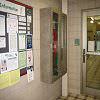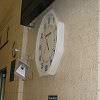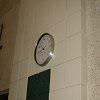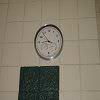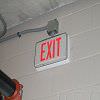Cinder Block Fasteners
Fasteners used for fastening items to a cinder block or to CMU come in many different types and configurations. The particular fastener used for an application depends on many things, including...
Fastening to Cinder block
Cinder block is an excellent building material and is used all over the world for many types of applications. It is strong, fairly lightweight, adaptable to many building needs and is relatively inexpensive compared to other building materials.
Cinder block can be very difficult for fastening for these reasons:
- It is hollow, brittle, inconsistent
- The holding values depend on the quality of the cinder block
- The holding value depends on the quality and quantity of mortar placed in the joints between cinder block
Drilling into a Cinder block
When drilling into a cinder block to place an anchor, a hammer drill must be used with carbide tipped bit. Drilling into the solid section does not create many problems; in fact, the hammer drill will drill the hole quite easily into the cinder block. If the hole is drilled in the area of the hollow section, inside spalling may occur because the tip of the bit gets close to the inside non-supported edge of the cinder block. This could cause a cone-shaped section to blow out, leaving less material for the fastener to grab and decreasing the holding values of the fastener once engaged.
Fastener Location
Many times the fastener location is predetermined by the holes in the fixture being attached to a cinder block. Fastening into the solid section allows for a better opportunity for successful fastening as compared to the hollow section. The mortar joint can be an excellent place to position a fastener, but the holding values obtained depend on the quality and quantity of mortar in the joint.
Types of Cinder block Fasteners
- Expansion – an expansion type anchor can be used in solid sections and mortar joints with great success. If used in the hollow section, the holding values obtained will depend on the amount of material left that the expansion anchor expands to.
- Screw – the Tapcon screw taps threads in the base material and can be used in all three sections with the holding values totally dependent on the quality of the base materials’ ability for thread tapping. In the hollow section, it is important to remember that the tapcon must be embedded into the base material a minimum of 1”.
- Through-Bolt – drill a hole through the width of the cinder block, using a plate washer and nut on one side and a nut and washer on the fixture side. This fastening method probably gives the best most consistent holding values and is easily done if both sides of the cinder block are accessible.
- Epoxy – concrete epoxy fastening method can be used and gives great holding strength. It is excellent in vibratory shock loading applications. A screen tube must be used in conjunction with threaded rod and a nut and washer. Using the screen tube with the epoxy allows for two fastening techniques in the hollow section of the cinder block. The first technique is through the adhesive strength of the epoxy. The second technique is achieved through the keying action of the epoxy once hardened in the screen tube and hollow inside wall of the cinder block.
Types of Expansion Cinder block Anchors
- Sleeve Anchors – sleeve anchors have excellent holding values in the block and can be used in all three sections of the cinder block with relatively high success rate. They are easy to use; come pre-assembled and come in a variety of different diameters and lengths to meet most cinder block fastening applications. Sleeve anchors also are available in a number of different head styles of acorn, hex, flat and round.
- Lag Shields – have been used for many years, can be used in all areas of the cinder block. They come in a short or long version, the short version is used in base material that is very hard, the longer version in base material that is softer or suspects to its quality. Lag shields come in diameters ranging from 1/4” to 3/4”.
- Single Expansion- excellent female fastener for the solid section of a cinder block should not be used in the hollow section because all of the holding strength comes from a single source and the length of the expansion is minimal. A bolt must be purchased separately that has national coarse threads. The single expansion anchor comes in diameters from 1/4” to 3/4”.
- Double Expansion – an excellent fastener for both the hollow or solid section of the cinder block and works well in the softer base material. The double expansion anchor expands along the whole length of the anchor making it ideal for applications where the base material is suspect. Each double expansion anchor requires that a bolt with national coarse threads be used and purchased separately. The double expansion anchor comes in six diameters starting at 1/4” through 3/4”.
- Machine Screw Anchor – is best used in the solid section of a cinder block because it requires the bottom of the hole to be used for proper setting and expansion. The machine screw anchor needs to be set using a setting tool. To be set properly, the anchor must sit against a solid base material as a hammer strikes the setting tool. Using a machine screw anchor into the hollow section can be done using a special hollow-set machine screw anchor setting tool manufactured by Greenlee. Machine Screw anchors come in diameters of #6, #10, 1/4”, 5/16”, 3/8”, 1/2”, 5/8” and 3/4”.
- Hammer Drive Anchor – is a light duty anchor that can be used in the solid section and the hollow section if enough base material is left after the drilling process is complete. Hammer drive anchors are simple to use and come complete with the nail and anchor body pre-assembled. The head of the hammer drive anchors has a mushroom head that measures about 1/2” across, making it perfect for applications where pullover is of concern. Once the nail is set in the anchor body of the hammer drive anchor, the anchor cannot be removed without cutting off the head. The hammer drive anchor comes in two diameters of 3/16” and 1/4” and in various lengths to accommodate different thickness of the material being fastened to the cinder block.
Installation
Each different cinder block anchor requires specific installations steps.
Although exact installation instructions for a specific anchor can be found in the manufacturer’s instructions, the following are general steps for installation:
- Drill a hole in the cinder block or mortar joint using a hammer drill with a carbide tipped bit that meets ANSI standards. Make sure that the drill bit is the correct diameter for the anchor being installed. The drill bit size for the sleeve anchor and the hammer drive anchor is equal to the diameter of the anchor being installed. The female type anchors require a hole to be drilled that is equal to the outside diameter and not the designated diameter.
- Once drilling is complete, clean out the hole of all dust and debris, using a wire brush, compressed air or vacuum. Insert the anchor into the pre-drilled hole in the cinder block and expand as required.
Sleeve Anchors
Single Expansion Anchors
Double Expansion Anchors
Lag Shield Anchor
Machine Screw Anchors
Metal Hit Anchors
Recent Posts
-
Best Masonry Anchors
Get the job done right the first time by using the best masonry anchors for the application. A mason …Nov 24th 2020 -
Best Cinder Block Fasteners
Fastening to Cinder Block Cinder block …Jun 16th 2020 -
Best Brick Anchors
Male or Female Anchor? Female anchors would require the spotting of the anchor and then place th …Feb 21st 2019


